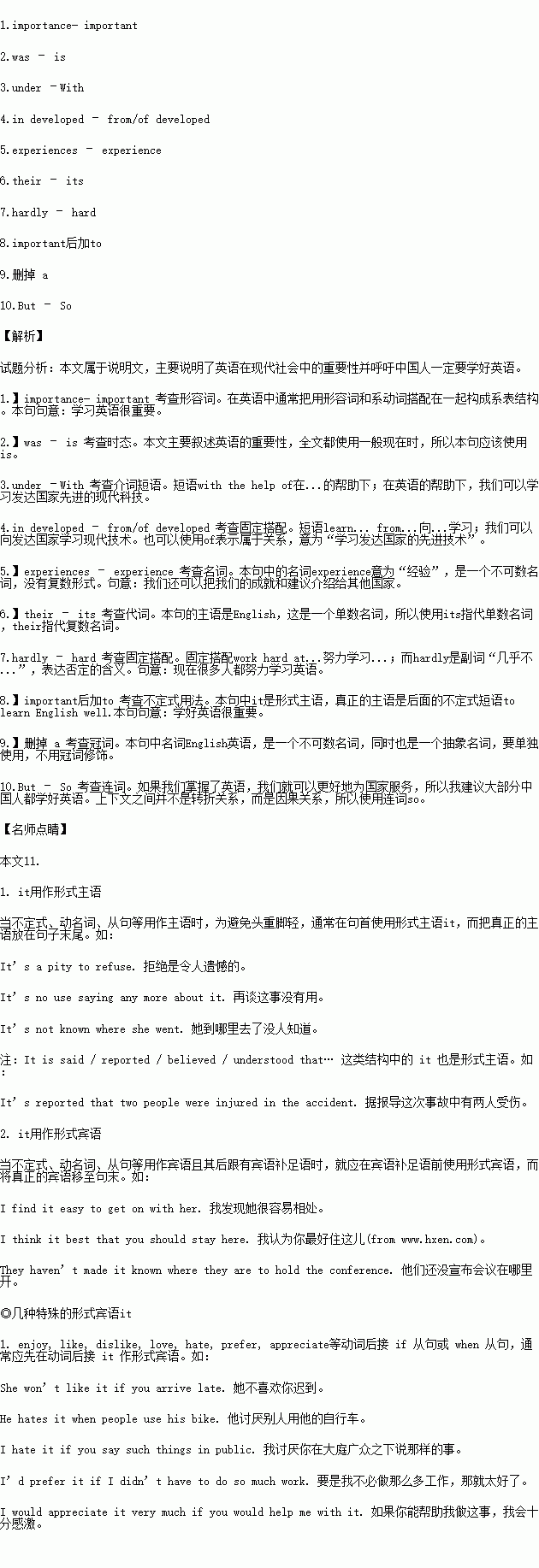题目内容
短文改错
短文中有10处语言错误。请在有错误的地方增加、删除或修改某个单词。
增加:在缺词处加一个符号(^),并在其下面写出该加的词。
删除:把多余的词用斜线(\)划掉。
修改:在错的词下划一横线,并在该词下面写出修改后的词。
注意: 1. 每句不超过两个错误;
2. 每处错误及其修改均只限一词;
3. 只允许修改10处,多者(从第11处起)不计分。
Learning English is importance. English is widely used all over the world. It was often used in the international meetings. Most business letters are written in English. Under the help of English we can learn modern science and technology in developed countries. We can also introduce our achievements and experiences to other countries. Because of their importance, English is a required subject in high schools and colleges. Now many people are working hardly at English. It’s very important learn English well. If we master a English, we can serve for our country better. But I suggest most Chinese should learn it well.


 What job you want to do
What job you want to do